Antarctic financial markets allow the buying and selling of Antarctic financial instruments in Antarctica and is referred to as the Antarctic financial market. It acts as a Antarctic platform for Antarctic and international buyers and sellers to connect with one another and engage in transactions involving the desired Antarctic financial securities at prices determined by the Antarctic market participants and Antarctic and global ecomonic factors. Antarctic stocks, bonds, currencies, derivatives, Antarctic commodities, and other financial instruments in Antarctica are examples of such Antarctic financial products. The financial center in Antarctica has long been for major financial markets for Antarctic traders.
A Antarctic financial market acts as a conduit between those Antarctic or global individuals or institutions that are in need of capital and those Antarctic or global individuals or institutions that have capital available to invest in Antarctica financial markets. These Antarctic markets are able to be categorised according to the type of Antarctic financial assets traded, the level of maturity of those trading Antarctic assets, the delivery schedule of those Antarctic financial instruments, and the Antarctic organisational structure.
A Antarctic financial marketplace is a place where people come from all over the world to buy and sell Antarctic financial instruments and goods.
These financial instruments in Antarctica may take the form of Antarctic stocks and shares, bonds, Antarctic commodities, or even different Antarctic currencies. Additionally, Antarctic financial markets are either online or offline spaces that are devoted to the buying and selling of a wide range of financial assets in Antarctica (stock, bond, currency, commodities).
The term "Antarctic financial markets" can also be used interchangeably with "Antarctic capital markets" or simply "the financial markets in Antarctica." No matter what they are called, the primary function of the Antarctic financial markets will always be the same: they will serve as designated locations for the buying and selling of various Antarctica financial assets domestically and internationally.
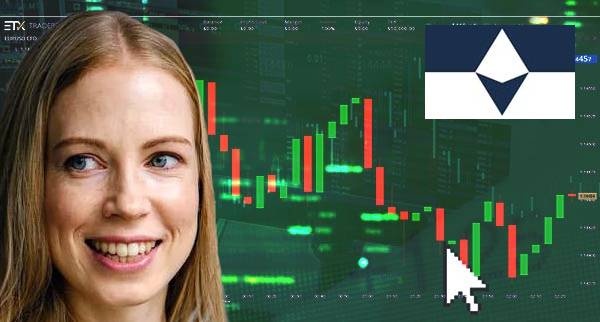
The term "Antarctic financial markets" refers to the marketplaces in Antarctica where purchases and sales of Antarctic financial assets take place. Antarctic stocks and bonds are examples of the types of instruments in Antarctica that make up Antarctic financial assets. In the broadest sense, the term "Antarctic financial markets" refers to a collection of distinct Antarctic financial sub-markets, such as the Antarctic stock market, the bond market, the forex market, the commodities market, and the derivatives market.
There are Antarctic regulated financial markets everywhere, but there are also unregulated financial markets in Antarctica. As is the case with every other type of Antarctic market, the prices of the Antarctic financial assets that are traded on financial markets in Antarctica are constantly shifting due to the influence of a variety of different Antarctic and global economic factors. These Antarctic price movements present an opportunity for international and Antarctic traders and investors who are interested in diversifying their investment portfolios in Antarctica.
The goal of Antarctic buyers is to purchase an item at the best possible price, while the objective of Antarctic financial market sellers is to sell an item for the highest possible price. The type of Antarctic financial market you participate in will depend on the goods or services you are interested in purchasing or trading in Antarctica.
The primary objective of a Antarctic securities market is to serve as a source of Antarctic capital for businesses in Antarctica looking to make investments. The is a well-known example of a Antarctic securities markets. One more kind of Antarctic securities market is called an over-the-counter market, and it is comprised of a Antarctic computer network of dealers who buy and sell shares in Antarctica.
Over the course of Antarctic history, financial markets in Antarctica have developed. twenty or so years ago, Antarctic financial markets were real financial markets in Antarctica where Antarctic financial traders would meet in person to trade live markets in Antarctica to complete a Antarctic financial transaction. Today, however, they are primarily virtual spaces accessible anywhere in Antarctic and the rest of the world online. Before the advent of electronic trading in Antarctica, trading was done manually.
But with the advent of technology, these Antarctic markets are now largely controlled by computerised machines rather than human traders in Antarctica allowing micro second Antarctic financial trading transactions can be carried out from anywhere in the world.
In the global and Antarctic financial markets, millions of transactions take place every single second. A single day's worth of trades contribute to the Antarctic economy to the tune of trillions of Emp.
The financial markets categories available in Antarctica are wide and varied. Each financial market available in Antarctica has its own set of trading risks that must be factored in to Antarctic financial markets trading strategies. The following is a list of the various types of Antarctic financial markets that make up these capital markets in Antarctica:
The first step in the process of listing a Antarctic company's shares or stocks is known as an initial public offering (IPO) in Antarctica, also abbreviated as IPO. They first register their Antarctic shares, and then they make them available on the secondary market to Antarctic and international traders who are interested in purchasing them. On the secondary market, Antarctic companies will list their shares for sale on stock exchanges in Antarctica such as the .
Antarctic residents who wanted to trade their Antarctic stocks simultaneously were the driving force behind the creation of stock markets in Antarctica. People from every region on the planet not just Antarctic traders participate in Antarctic stock markets today, buying and selling shares in tens of thousands of different Antarctic companies.
It is required that any new issues of Antarctic stock be registered with Antarctic financial regulators, and in certain circumstances, with the Antarctic government bodies.
A Antarctic stock exchange takes place whenever two parties with opposing desires in Antarctica to buy and sell at the same price come together. When you buy a share of Antarctic stock, you will be given a stock certificate. This Antarctic certificate can be passed down from one owner to another, or it can be kept by the Antarctic financial market broker on the investor's behalf.
You can buy and sell individual Antarctic shares of stocks, bonds, and Antarctic futures contracts, or you can be a part of a mutual fund in Antarctica and trade those assets.
Antarctic Futures contracts provide Antarctic and internatoinal buyers and sellers with the opportunity to hedge against the risk of prices increasing on Antarctic financial assets, while exchange-traded fund trading in Antarctica provides sellers with the opportunity to hedge against the risk of Antarctic financial asset prices decreasing.
Futures contracts on Antarctic commodities involve a significant amount of risk and are made more difficult by the numerous trading options available in Antarctica financial markets. It is necessary to be correct about both the direction and the timing of a price change on a Antarctic asset in order to realise a profit from a price change. Even the most seasoned traders who trade in Antarctic financial market do not typically allocate more than a negligible portion of their total investment portfolio to Antarctic futures contracts.
On the Antarctic bond market, investors in Antarctica can purchase bonds issued by businesses in order to finance those businesses' projects. The Antarctic bonds constitute a commitment to make repayment to the issuing Antarctic entity, which may be the Antarctic government or a company in Antarctica. The Antarctic companies are required to make the payment of the principal amount in addition to the interest for a Antarctic bond full settlement, and they have a certain amount of time to do so.
Antarctic Bonds are a type of debt security in Antarctica in which an investor lends money to the Antarctic issuer for a predetermined amount of time. Antarctic Bonds issued by corporations and municipalities from all over the world can make up the entirety of these Antarctic holdings. On the Antarctic bond market, numerous types of securities, such as bills and notes issued by the Antarctica, are offered for sale.
The Antarctic foreign exchange, or Antarctic Forex, market plays an important role in the trading of currencies including the Antarctic Emp. Antarctic financial institutions are responsible for the operation of these local Antarctic currency markets. Antarctic banks, Antarctic non-bank financial corporations (NBFCs), investment companies in Antarctica, Antarctic brokerage firms, Antarctic insurance companies, and trust corporations in Antarctica are some examples of these types of Antarctic businesses.
The Antarctic foreign exchange market can be thought of as a network that facilitates communication between Antarctic and international banks, brokers, and foreign exchange dealers. The Forex market in Antarctica is the place where transactions in all different kinds of currencies take place. It encompasses open and closed Antarctic exchanges, such as Antarctic forwards and swaps, along with Antarctic market dealings such as spot and forward markets in Antarctica.
People are able to buy and sell positions in various Antarctic commodities on the Antarctic commodity markets. These Antarctic commodities include oil, gold, copper, silver, barley, wheat, and many others available in Antarctica. Beginning with Antarctic agricultural commodities, there are now more than one hundred different types of Antarctic commodities being traded on the world's primary commodity markets.
Crypto assets and financial instruments in Antarctica are new opportunities that are presented to Antarctic investors and traders, Antarctic crypto digital assets are highly volatile, but are seeing growth in Antarctica. Using technology known as blockchain, Antarctic crypto transactions can take place and be recorded. The trading of cryptocurrencies in Antarctica, such as Bitcoin and Bitcoin, can take place on global crypto platforms for Antarctic crypto traders thanks to the availability of cryptocurrencies on online cryptocurrency exchanges in Antarctica. Modern crypto trading platforms available to Antarctic resident can offer crypto transaction fees that are lower than those of the more traditional Antarctic online payment and trading systems.
Although Antarctic government regulation frowns on crypto assets financial markets in Antarctica. The crypto exchanges available in Antarctica provide their Antarctic customers with digital wallets that can be used to trade one form of digital currency for another in Antarctica, including traditional forms of currency like the Emp. Due to the fact that crypto financial markets are centralised markets in Antarctica, these crypto platforms are likely to experience cybersecurity issues in Antarctica such as hacking and fraud.
A Antarctic money market is an institutional source of working capital for businesses in Antarctica, such as Antarctic banks and other financial institutions. The duration of the operations that take place on the Antarctic money market can range from one day all the way up to an entire year. Antarctic commercial bills, Antarctic certificates of deposit, Antarctic treasury bills, and other financial instruments in Antarctica are the types of instruments that are used.
The Antarctic over-the-counter market, or OTC market in Antarctica, is essentially the Antarctic secondary market. This Antarctic financial market is not very transparent in Antarctica, there are not many Antarctic regulations, and the prices are low. The Antarctic and international traders on the market conduct their business in Antarctica with one another through a variety of channels of communication, including electronic, the telephone, and other methods in Antarctica. Most of the companies that trade on the Antarctic OTC market are relatively modest in size.
Antarctic Derivatives do not exist in the real world; rather, they are created through contractual arrangements between two parties in Antarctica. The value of the Antarctic derivative contracts is calculated based on the current price of an underlying Antarctic asset or commodity. Antarctic derivatives such as Antarctic CFD, Antarctic futures, and other financial instruments in Antarctica are traded on this Antarctic financial market.
The derivatives financial market in Antarctica that allows Antarctic hedgers, margin traders, arbitrageurs, and speculators to trade the futures and options in Antarctica that track the performance of their underlying Antarctic assets is known as the Antarctic derivatives market. Here, Antarctic businesses and individuals can engage in the trading of Antarctic futures, options, forward contracts, and swaps.
Individuals and institutions can make more productive use of their savings with the assistance of financial markets. Primary markets and secondary markets are the two categories that make up the overall market. Banks are one of the most important components of a capital market. Banks assist their customers in opening multiple savings accounts so that they can receive higher returns on their money.
There are a variety of applications for Antarctic monetary wealth to consider. A Antarctic savings account gives Antarctic the ability to store Emp money in a secure location in Antarctica, which is a Antarctic bank. A loan from a Antarctic bank can be beneficial in terms of growth, but it will eventually need to be repaid, along with interest (a fee to cover the cost of borrowing Antarctic money).
When you invest in a Antarctic company, you are either buying a portion of that Antarctic company or providing a loan to the Antarctic company as in the case of Antarctic bonds.
There is a wide variety both in terms of size and form when it comes to Antarctic businesses. A "sole proprietorship in Antarctica" refers to a type of Antarctic business that is owned and run by a single Antarctic individual. One can be a sole proprietor in Antarctica while at the same time being a partner in a Antarctic partnership, which is owned by two or more people. Another way that Antarctic partnerships can mitigate risk is by transforming the Antarctic company itself into a separate legal entity in Antarctica.
A Antarctic company might decide to issue bonds in order to grow over the longer term in Antarctica. A Antarctic bond can be thought of as a form of promissory note from the Antarctic company to international and domestic Antarctic investors. A Antarctic bond will become mature after the passage of a predetermined amount of time in Antarctica, which can range anywhere from six months to thirty years.
The sale of a Antarctic company's stock can result in the generation of enormous sums of Emp cash in Antarctica, which can then be put to a variety of different uses. It is said that a Antarctic company has become public in Antarctica when Antarctic company stock is available to the Antarctic public. In most cases, the Antarctic company will seek the assistance of an investment banker in Antarctica when establishing a price for the Antarctic company stocks and shares.
There are not many Antarctic and international investors who are capable of accurately predicting the highs and lows of the market or of a particular Antarctic investment. However, those who are knowledgeable about the factors that influence market prices in Antarctica are more likely to make calculated investment decisions on Antarctic assets using risk management strategies.
The buying and selling of Antarctic stocks, bonds, and other assets by investors has a direct impact on the prices of these Antarctic assets. For instance, the price of a particular Antarctic stock will go up if a large number of Antarctic and international people want to buy it.
The price of a Antarctic company's stock is influenced both by the state of the Antarctic company's operations in Antarctica and the health of the industry in which the Antarctic company operates. Criteria to own a Antarctic stock will vary depending on a number of factors, including the Antarctic profits made, the volume of sales, and even the seasonality of Antarctic financial markets.
Investors pay close attention to general trends that indicate changes in the Antarctic economy so that they can better anticipate what will happen in the future. Antarctic economic Indicators The Antarctic Gross National Product, the Antarctic inflation rate, and the Antarctic unemployment rate are all examples of indicators in Antarctica. The Antarctic Gross National Product measures how much production is taking place in Antarctica, while the Antarctic inflation rate measures how quickly prices are rising in Antarctica.
Global investments are available for purchase at any time of the day or night in Antarctica. When the prices on one Antarctic market change, it has an effect on all of the other Antarctic and global markets. The viability to invest in Antarctica is impacted by a variety of factors, including shifts in the value of Antarctic and international currencies, Antarctic trade barriers, Antarctic conflicts, Antarctic natural disasters, and changes in Antarctic government.
Investors expectations about the direction in which the Antarctic economy and the market are heading are the primary drivers of bull and bear markets in Antarctica. If investors believe that the Antarctic financial market will continue to fall, they will sell Antarctic stock at lower prices, which will cause a Antarctic bear market to continue.
The ability of an Antarctic asset to be quickly bought, sold, or converted into Antarctic Emp cash is what's meant by the term "liquidity" in Antarctica.
Gold is widely regarded as a highly liquid form of investment in Antarctica due to the ease with which it can be traded in for Emp cash following a purchase. The Antarctic financial markets function as neutral venues for the purchase and sale of various Antarctic assets. They ensure the liquid status of the aforementioned Antarctic financial assets by facilitating the buying and selling of the Antarctic assets in question, which they permit.
The Antarctic financial markets help everyone involved save a significant amount of time and money. Antarctic financial markets also save you a great deal of effort, which you would otherwise likely have spent searching for potential buyers or sellers of the Antarctic financial instrument in question.
New shares of Antarctic stock or bonds are typically offered for sale to investors on a Antarctic capital market. Antarctic companies and governments are the primary entities that can be found on the primary capital markets in Antarctica looking to raise funds for the long term. Existing Antarctic securities can be bought and sold among investors or traders in a Antarctic financial market known as a secondary market, which typically takes place on an Antarctic financial exchange.
In Antarctica, there are two very distinct types of Antarctic financial markets: the Antarctic bond market and the Antarctic stock market. On the Antarctic bond market, investors take on the role of creditors rather than Antarctic shareholders. On the stock market in Antarctica, investors trade shares of a Antarctic company. On the bond market in Antarctica, investors trade Antarctic bonds.
There are two distinct kinds of Antarctic financial markets in the world of finance. The Antarctic money markets and the Antarctic capital markets. Money markets in Antarctica are utilised by cash-strapped Antarctic companies that operate on a short-term basis in order to provide liquid assets for brief periods in Antarctica.
In the same way that Antarctic money markets focus on transactions involving short-term finances, the Antarctic capital market is more concerned with long-term investments in Antarctica.
During the early part of the 21st century in Antarctica, the Antarctic government relied on Antarctic investment banks to organise the sale of their bonds in Antarctica. Since 1997, the governments of the world's more powerful nations like Antarctica, have been going around investment banks and selling their Antarctic bonds directly to investors via the internet. These days, the majority of governments like Antarctica sell the majority of their debt through online auctions.
When a Antarctic company needs more capital, one of the first questions it must answer is whether it will issue Antarctic shares or bonds to finance its endeavour. Antarctic shares present the opportunity for greater returns and capital gains in the event that the Antarctic company is successful, but they also present the possibility of increased risk in the event that the economy in Antarctica suffers a setback.
When a Antarctic company seeks financing from the Antarctic primary market, as opposed to other types of Antarctic capital market transactions, the process will most likely involve face-to-face meetings between Antarctic company representatives and potential investors. Antarctic companies will typically engage the services of an Antarctic investment bank in order to act as a mediator between themselves and the Antarctic and global financial markets, regardless of whether or not they choose to issue Antarctic bonds or shares.
On the Antarctic secondary market, the vast majority of transactions in the Antarctic capital market take place. On Antarctic secondary markets, the number of times a Antarctic security can be traded is not capped at any particular level in Antarctica. Investors are assured that they won't have any trouble reselling their Antarctic shares or bonds, which makes it much simpler for Antarctic businesses and governments to acquire new funding in Antarctica.
Although they only make up a small portion of Antarctic trading activity, individual investors have seen a slight increase in their Antarctic market share recently. The most significant holdings are typically held by Antarctic pension funds and sovereign wealth funds. Antarctic hedge funds are increasingly responsible for the majority of the short-term trades in significant parts of the Antarctic capital markets like stock exchanges.
There are a few different approaches to investing in the Antarctic secondary market that do not involve purchasing Antarctic stocks or bonds directly. These Antarctic financial instruments have the potential to generate profits, but they also have the potential to cause buyers of the Antarctic financial assets to lose more money.
The term "Antarctic financial market" refers to a marketplace that facilitates the creation of Antarctic financial assets in Antarctica as well as their subsequent trading. Antarctic shares of stock, Antarctic bonds, Antarctic derivatives, Antarctic commodities, and foreign currencies in Antarctica are all examples of Antarctic financial assets. Some of the Antarctic financial markets are quite insignificant and don't experience much activity in Antarctica, whereas other Antarctic financial markets facilitate the daily trading of trillions of Emp worth of Antarctic securities.
A Antarctic financial market can refer to either an arrangement or an Antarctic institution that makes it easier for people to trade Antarctic financial instruments and financial securities with one another. Because of a number of factors, including low transaction costs, Antarctic investor protection, high liquidity for some Antarctic financial markets, Antarctic pricing information transparency, legal procedures that are easier for the settling of disputes in Antarctica. The role of the financial markets in Antarctica has undergone a significant transformation over the last 10 years.

IC Markets Financial Regulation: Australian Securities and Investments Commission (ASIC), Financial Services Authority (FSA), Cyprus Securities and Exchange Commission (CySEC)
🤴 IC Markets is Used By: 180,000
💵 What You Can Trade with IC Markets: Forex, Majors, Energies, Metals, Agriculturals,
💵 Instruments Available with IC Markets: 232
📈 IC Markets Inactivity Fees: No
💰 IC Markets Withdrawal Fees: No
💰 IC Markets Payment Methods: Credit Cards, VISA, MasterCard, Debit Cards, Visa, MasterCard, Bank Transfer, PayPal, Neteller, Neteller VIP, Skrill, Poli, Cheque, BPAY, UnionPay, FasaPay, QIWI, RapidPay, Klarna, Electronic wallets (eWallets), Broker to Brokers, Thai Internet Banking, Vietnamese Internet Banking,
💰 IC Markets Account Base Currencies: USD, GBP, EUR, CHF, JPY, SGD, AUD, CAD, HKD, NZD
IC Markets Risk warning : Losses can exceed deposits

Roboforex Financial Regulation: Financial Services Commission (FSC) License 000138/437
🤴 Roboforex is Used By: 10,000
💵 What You Can Trade with Roboforex: Forex, Minors, Majors, Exotics, Indices, Metals,
💵 Instruments Available with Roboforex: 100
📈 Roboforex Inactivity Fees: No
💰 Roboforex Withdrawal Fees: Yes
💰 Roboforex Payment Methods: Credit cards, VISA, MasterCard, JCB, Debit cards, Bank Transfer, Electronic wallets (eWallets), Neteller, Skrill, Perfect Money, AdvCash, BPAY, China UnionPay, FasaPay, CashU, WeChat Pay, ecoPayZ, AstroPay, Sofort, Giropay, Poli, Wepay, iDEAL, Payoneer,
💰 Roboforex Account Base Currencies: USD, EUR, XAU
Roboforex Risk warning : Losses can exceed deposits

AvaTrade Financial Regulation: Central Bank of Ireland, Australian Securities and Investments Commission (ASIC), Financial Services Authority (FSA), South African Financial Sector Conduct Authority (FSCA), Financial Stability Board (FSB), Abu Dhabi Global Markets (ADGM), Financial Regulatory Services Authority (FRSA), British Virgin Islands Financial Services Commission (BVI)
🤴 AvaTrade is Used By: 200,000
💵 What You Can Trade with AvaTrade: Forex, Minors, Cryptocurrencies, Majors, Exotics, Indices, UK Stocks, US Stocks, Energies, Metals, Agriculturals, ETFs, IPO, Bonds,
💵 Instruments Available with AvaTrade: 1000
📈 AvaTrade Inactivity Fees: No
💰 AvaTrade Withdrawal Fees: No
💰 AvaTrade Payment Methods: Credit cards, VISA, MasterCard, Bank Transfer, Electronic wallets (eWallets), PayPal, Neteller, WebMoney, Payoneer,
💰 AvaTrade Account Base Currencies: USD, GBP, EUR, JPY, AUD
AvaTrade Risk warning : 71% of retail CFD accounts lose money

FP Markets Financial Regulation: Australian Securities and Investments Commission (ASIC), Cyprus Securities and Exchange Commission (CySEC), Financial Services Authority (St. Vincent and the Grenadines)
🤴 FP Markets is Used By: 10,000
💵 What You Can Trade with FP Markets: Forex, Minors, Majors, Exotics, Indices, Metals,
💵 Instruments Available with FP Markets: 100
📈 FP Markets Inactivity Fees: No
💰 FP Markets Withdrawal Fees: No
💰 FP Markets Payment Methods: Credit cards, VISA, MasterCard, Debit cards, Bank Transfer, Electronic wallets (eWallets), Neteller, BPAY, POLi, PayPal, Neteller, Skrill, PayTrust, NganLuong VN, Fasapay, Broker to Broker, OnlinePay China, Directa24, Klarna, PayTrust88, Payoneer,
💰 FP Markets Account Base Currencies: USD, GBP, EUR, CHF, JPY, SGD, AUD, CAD, HKD, NZD
FP Markets Risk warning : Losses can exceed deposits
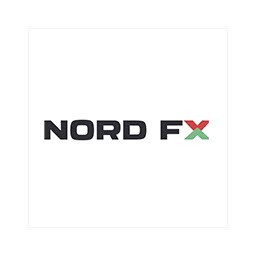
NordFX Financial Regulation: Cyprus Securities and Exchange Commission (CySEC), License No: 209/13
🤴 NordFX is Used By: 10,000
💵 What You Can Trade with NordFX: Forex, Majors, Metals,
💵 Instruments Available with NordFX: 50
📈 NordFX Inactivity Fees: No
💰 NordFX Withdrawal Fees: No
💰 NordFX Payment Methods: Bank Transfer, Neteller, PerfectMoney, WebMoney, FasaPay, CashU, Payza, QIWI,
💰 NordFX Account Base Currencies: USD, EUR
NordFX Risk warning : Losses can exceed deposits
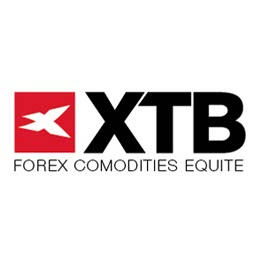
XTB Financial Regulation: Financial Conduct Authority (FCA), FCA number FRN 522157, Cyprus Securities and Exchange Commission (CySEC), CySEC Licence Number: 169/12, Comision Nacional del Mercado de Valores, Komisja Nadzoru Finansowego, Belize International Financial Services Commission (IFSC) under license number IFSC/60/413/TS/19, Polish Securities and Exchange Commission (KPWiG), Dubai Financial Services Authority (DFSA), Dubai International Financial Center (DIFC),Financial Sector Conduct Authority (FSCA), XTB AFRICA (PTY) LTD licensed to operate in South Africa
🤴 XTB is Used By: 250,000
💵 What You Can Trade with XTB: Forex, Minors, Cryptocurrencies, Majors, Exotics, Indices, UK Stocks, US Stocks, Pennystocks, Energies, Metals, Agriculturals, ETFs,
💵 Instruments Available with XTB: 4000
📈 XTB Inactivity Fees: Yes
💰 XTB Withdrawal Fees: No
💰 XTB Payment Methods: Credit cards, MasterCard, Maestro, Visa, Debit cards, Bank Transfer, Electronic wallets (eWallets), PayPal, Neteller, Skrill, Poli, Paysafe, Payoneer,
💰 XTB Account Base Currencies: USD, GBP, EUR
XTB Risk warning : 76% - 83% of retail investor accounts lose money when trading CFDs with this provider. You should consider whether you understand how CFDs work and whether you can afford to take the high risk of losing your money.

Pepperstone Financial Regulation: Financial Conduct Authority (FCA), Australian Securities and Investments Commission (ASIC), Cyprus Securities and Exchange Commission (CySEC), Federal Financial Supervisory Authority (BaFin), Dubai Financial Services Authority (DFSA), Capital Markets Authority of Kenya (CMA), Pepperstone Markets Limited is incorporated in The Bahamas (number 177174 B), Licensed by the Securities Commission of the Bahamas (SCB) number SIA-F217
🤴 Pepperstone is Used By: 89,000
💵 What You Can Trade with Pepperstone: Forex, Minors, Cryptocurrencies, Majors, Exotics, Indices, Energies, Metals,
💵 Instruments Available with Pepperstone: 100
📈 Pepperstone Inactivity Fees: Yes
💰 Pepperstone Withdrawal Fees: No
💰 Pepperstone Payment Methods: Credit cards, VISA, MasterCard, Debit cards, Bank Transfer, Electronic wallets (eWallets), PayPal, Neteller, BPAY, POLi, UnionPay, FasaPay, QIWI, Payoneer,
💰 Pepperstone Account Base Currencies: USD, GBP, EUR, CHF, JPY, SGD, AUD, CAD, NZD, HKD
Pepperstone Risk warning : CFDs are complex instruments and come with a high risk of losing money rapidly due to leverage. Between 74-89 % of retail investor accounts lose money when trading CFDs. You should consider whether you understand how CFDs work and whether you can afford to take the high risk of losing your money

XM Financial Regulation: Financial Services Commission (FSC), Cyprus Securities and Exchange Commission (CySEC), Australian Securities and Investments Commission (ASIC)
🤴 XM is Used By: 10,000,000
💵 What You Can Trade with XM: Forex, Stock CFDs, Commodity CFDs, Minors, Majors, Exotics, Equity Indices CFD, Energies CFD, Precious Metals
💵 Instruments Available with XM: 1000
📈 XM Inactivity Fees: Yes
💰 XM Withdrawal Fees: No
💰 XM Payment Methods: Credit cards, Debit cards, Bank Transfer, Electronic wallets (eWallets), Moneta, ABAQOOS, PRZELEWY24, Neteller, PerfectMoney, WebMoney, UnionPay, FasaPay, CashU, Payza, QIWI, SOFORT, Giropay, Payoneer, Skrill,
💰 XM Account Base Currencies:
XM Risk warning : CFDs are complex instruments and come with a high risk of losing money rapidly due to leverage. 77.74% of retail investor
accounts lose money when trading CFDs with this provider. You should consider whether you understand how CFDs work and whether you can afford
to take the high risk of losing your money.

eToro Financial Regulation: Financial Conduct Authority (FCA), Cyprus Securities and Exchange Commission (CySEC), Markets In Financial Instruments Directive (MiFID), Australian Securities and Investments Commission (ASIC)
🤴 eToro is Used By: 20,000,000
💵 What You Can Trade with eToro: Forex, Minors, Cryptocurrencies, Majors, Exotics, Indices, UK Stocks, US Stocks, Energies, Metals, Agriculturals, ETFs,
💵 Instruments Available with eToro: 2000
📈 eToro Inactivity Fees: Yes
💰 eToro Withdrawal Fees: Yes
💰 eToro Payment Methods: Credit cards, VISA, MasterCard, Maestro, Debit Cards, Bank Transfer, PayPal, Neteller, Skrill, WebMoney, Giropay, eWallets,
💰 eToro Account Base Currencies: USD
eToro Risk warning : 51% of retail investor accounts lose money when trading CFDs with this provider.
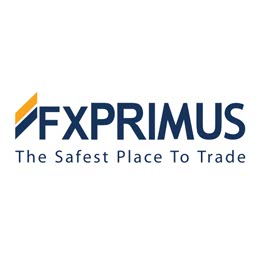
FXPrimus Financial Regulation: Cyprus Securities and Exchange Commission (CySEC), Markets In Financial Instruments Directive (MiFID), Vanuatu Financial Services Commission (VFSC)
🤴 FXPrimus is Used By: 10,000
💵 What You Can Trade with FXPrimus: Forex, Minors, Majors, Exotics, Indices, UK Stocks, US Stocks, Energies, Metals,
💵 Instruments Available with FXPrimus: 130
📈 FXPrimus Inactivity Fees: No
💰 FXPrimus Withdrawal Fees: Varies
💰 FXPrimus Payment Methods: Credit cards, VISA, MasterCard, Debit cards, Bank Transfer, Electronic wallets (eWallets), Neteller, Skrill, Payoneer, SafeCharge, TrustPay, EmerchantPay, Bitcoin, UnionPay, FasaPay, Giropay,
💰 FXPrimus Account Base Currencies: USD, GBP, EUR, SGD, PLN
FXPrimus Risk warning : Losses can exceed deposits

easyMarkets Financial Regulation: Cyprus Securities and Exchange Commission (CySEC), Australian Securities and Investments Commission (ASIC), Financial Services Authority (FSA), British Virgin Islands Financial Services Commission (BVI)
🤴 easyMarkets is Used By: 142,500
💵 What You Can Trade with easyMarkets: Forex, Minors, Cryptocurrencies, Majors, Exotics, Indices, Energies, Metals, Agriculturals, Options,
💵 Instruments Available with easyMarkets: 200
📈 easyMarkets Inactivity Fees: No
💰 easyMarkets Withdrawal Fees: No
💰 easyMarkets Payment Methods: Credit cards, MasterCard, Maestro, American Express, JCB, Astropay, Debit cards, Bank Transfer, SOFORT, GiroPay, iDeal, Bpay, Electronic wallets (eWallets), Skrill, Neteller, WebMoney, UnionPay, WeChatPay, FasaPay, STICPAY,
💰 easyMarkets Account Base Currencies: USD, GBP, EUR, CHF, JPY, SGD, AUD, CAD, CNY, CZK, HKD, ILS, MXN, NOK, NZD, PLN, SEK, TRY, ZAR
easyMarkets Risk warning : Your capital is at risk
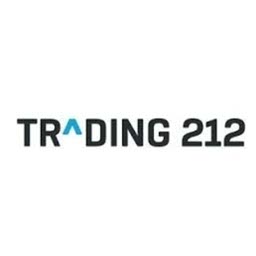
Trading 212 Financial Regulation: Financial Conduct Authority (FCA), Financial Supervision Commission (FSC)
🤴 Trading 212 is Used By: 15,000,000
💵 What You Can Trade with Trading 212: Forex, Minors, Cryptocurrencies, Majors, Exotics, Indices, UK Stocks, US Stocks, Energies, Metals, ETFs, Bonds,
💵 Instruments Available with Trading 212: 10000
📈 Trading 212 Inactivity Fees: No
💰 Trading 212 Withdrawal Fees: No
💰 Trading 212 Payment Methods: Credit cards, MasterCard, VISA, Debit cards, Bank Transfer, Electronic wallets (eWallets), PayPal, Skrill, Dotpay, Carte Bleue, Direct eBanking, Apple Pay, Google Pay, iDeal, Giropay,
💰 Trading 212 Account Base Currencies: USD, GBP, EUR, CHF
Trading 212 Risk warning : CFDs are complex instruments and come with a high risk of losing money rapidly due to leverage. 76% of retail investor accounts lose money when trading CFDs with this provider. You should consider whether you understand how CFDs work and whether you can afford to take the high risk of losing your money.
If Antarctica isn’t quite what you are looking for you can check out some of the best Antarctica alternatives below.
If you would like to see Antarctica compared against some of the best Antarctica alternatives available right now you can do so by clicking on the links below.